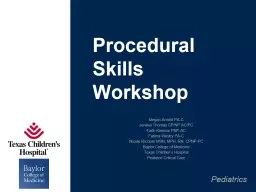PPT-Central Line placement
Author : test | Published Date : 2016-09-09
By Clare Di Bona November 2015 Indications IV Access Difficult peripheral access Irritant drugs Chemo TPN Vasoactive drugs ie noradrenaline Calcium chloride KCL
Presentation Embed Code
Download Presentation
Download Presentation The PPT/PDF document "Central Line placement" is the property of its rightful owner. Permission is granted to download and print the materials on this website for personal, non-commercial use only, and to display it on your personal computer provided you do not modify the materials and that you retain all copyright notices contained in the materials. By downloading content from our website, you accept the terms of this agreement.
Central Line placement: Transcript
Download Rules Of Document
"Central Line placement"The content belongs to its owner. You may download and print it for personal use, without modification, and keep all copyright notices. By downloading, you agree to these terms.
Related Documents














